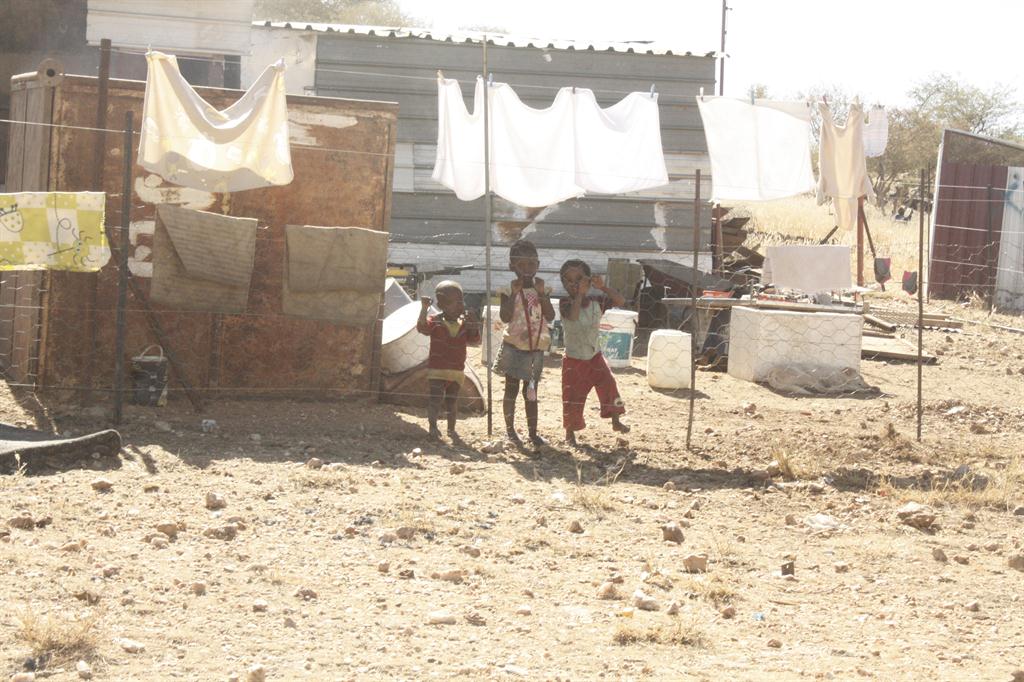Namibian child in crisis
While the country celebrates the Day of the Namibian Child today, the nation's children continue to suffer from hunger, parental neglect and oftentimes downright despair.
Community activist and former MP Rosa Namises warns that Namibia risks losing its youth to social evils if something drastic is not done immediately.
Namises, who runs a shelter for vulnerable children, says young boys and girls are increasingly driven to drugs and prostitution for survival.
“I have found children as young as six sniffing benzene and girls as young as 12 are selling their bodies in Shanghai Street, right here in Katutura. Girls are even fighting with adult women for clients and last week we had to break up such a fight.”
Namises says parents are shirking their responsibilities by passing their children on to aunts, uncles, stepfathers and stepmothers.
According to her, Namibians seem to be distracted from real priorities such as their children.
“We see too much hurt in children. They are hurt in so many different ways.”
Although emphasising that the government is trying its best, Okahandja mayor Congo Hindjou says more needs to be done to address the plight of the country's children. The town has many school-age children roaming the streets.
He too, emphasises a lack of parental involvement and an attitude of “not my child, not my problem”.
“We can no longer walk past a five-year-old child scavenging for food at a dumpsite on a school day. We must intervene and ask why the child is not in school and where the parents are. We have a lot to do,” he says.
And the problem extends far beyond Okahandja.
This month, Nampa reported that the Otjiwarongo dumpsite had become a source of food for nearly 40 people, including babies and teenagers.
Meanwhile, a social worker in the ministry of gender equality and child welfare, Wendy Wilson, says the government is trying to save its children but the situation remains dire.
Wilson, who is based in the Mukwe constituency in the Kavango East Region, says children in that area remain disadvantaged.
“You find that 27 years after independence children are still without national documents, which makes it impossible for them to receive social grants,” she says.
This year alone in her constituency, 45 foster families were registered while 2 300 children were registered for the orphans and vulnerable children grant.
The government's decision to close down 72 public schools with fewer than 35 pupils has worsened the plight of the Namibian child.
More than ten schools in Kavango East are facing closure, which will drive children out of school and onto the streets, Wilson says.
“Some children are travelling between 20 and 60 kilometres just to attend a school. The situation of the San children is even worse, very few of these children make it to grade 10,” she says.
JEMIMA BEUKES
Community activist and former MP Rosa Namises warns that Namibia risks losing its youth to social evils if something drastic is not done immediately.
Namises, who runs a shelter for vulnerable children, says young boys and girls are increasingly driven to drugs and prostitution for survival.
“I have found children as young as six sniffing benzene and girls as young as 12 are selling their bodies in Shanghai Street, right here in Katutura. Girls are even fighting with adult women for clients and last week we had to break up such a fight.”
Namises says parents are shirking their responsibilities by passing their children on to aunts, uncles, stepfathers and stepmothers.
According to her, Namibians seem to be distracted from real priorities such as their children.
“We see too much hurt in children. They are hurt in so many different ways.”
Although emphasising that the government is trying its best, Okahandja mayor Congo Hindjou says more needs to be done to address the plight of the country's children. The town has many school-age children roaming the streets.
He too, emphasises a lack of parental involvement and an attitude of “not my child, not my problem”.
“We can no longer walk past a five-year-old child scavenging for food at a dumpsite on a school day. We must intervene and ask why the child is not in school and where the parents are. We have a lot to do,” he says.
And the problem extends far beyond Okahandja.
This month, Nampa reported that the Otjiwarongo dumpsite had become a source of food for nearly 40 people, including babies and teenagers.
Meanwhile, a social worker in the ministry of gender equality and child welfare, Wendy Wilson, says the government is trying to save its children but the situation remains dire.
Wilson, who is based in the Mukwe constituency in the Kavango East Region, says children in that area remain disadvantaged.
“You find that 27 years after independence children are still without national documents, which makes it impossible for them to receive social grants,” she says.
This year alone in her constituency, 45 foster families were registered while 2 300 children were registered for the orphans and vulnerable children grant.
The government's decision to close down 72 public schools with fewer than 35 pupils has worsened the plight of the Namibian child.
More than ten schools in Kavango East are facing closure, which will drive children out of school and onto the streets, Wilson says.
“Some children are travelling between 20 and 60 kilometres just to attend a school. The situation of the San children is even worse, very few of these children make it to grade 10,” she says.
JEMIMA BEUKES





Comments
Namibian Sun
No comments have been left on this article